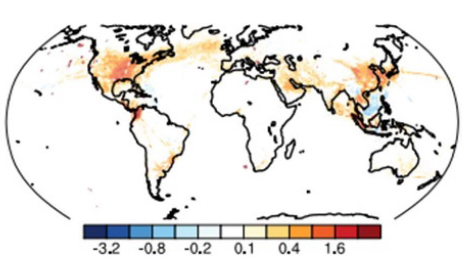The sixth scientific axis has the general objective of exploring strategies to minimise the overall climate impact of aviation, taking into account not only CO2 but also the other types of impacts studied in the Climaviation research programme. These strategies could involve changes in fuels or in current flying practices. For example, avoiding flying in an area where contrails are likely to occur may lead to a less optimised route in terms of fuel consumption and therefore additional CO2 emissions. Trade-offs are therefore necessary, which must be based on the definition of one or more metrics that represent the overall impact of a flight, taking into account all climate effects.
The first objective is to evaluate different climate metrics and their relevance to different choices of aviation climate impact reduction targets.
The second objective is to simulate the climate impact of aviation based on different fleet characteristics and different scenarios of future fleet evolution.

The third objective is to quantify the quality of weather forecasts of water vapour and ice-supersaturated regions in order to estimate the feasibility of their avoidance.
The fourth objective is to reflect on the different solutions that could reduce the overall climate impact of aviation, taking into account the specificity of the different contributions to climate change. As the conditions for minimising their impact are not the same for each of these contributions, compromises need to be studied. For example, avoiding contrail formation may involve a change of route which results in increased fuel consumption and therefore CO2 emissions.

